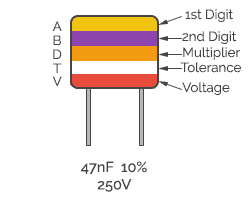Capacitor is an electronic component that stores and controls electrical energy and is an essential element used in printed circuit boards (PCB’s).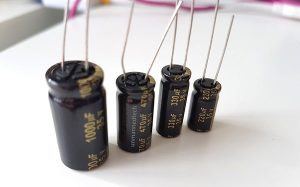
Choosing a capacitor depends on the circuit and applications. There are some parameters to look before choosing a capacitor.They are nominal capacitance, working voltage, voltage ripple, charging and discharging time. These parameters are much needed while selecting the capacitor for high energy storage.
- Capacitance value
- Working voltage
- Operating temperature
- Leakage current
- Tolerance
- Temperature coefficient
- Polarized or Non-Polarized
- Cost
- Lead type
Practical Capacitor
The working of capacitor determines the change in capacitance value. The dieletric material plays an important role in changing the capacitance. When two parallel plates (metallic type) are separated by a dielectric material (insulator such as paper, air, glass etc.) a charge is formed when the voltage across the parallel plates is equal to the applied voltage. When capacitors are connected in parallel their capacitance is equal to sum of the individual capacitances. The symbol of charge is ‘Q’ (positive and negative charge) and the unit of charge is Coulomb.
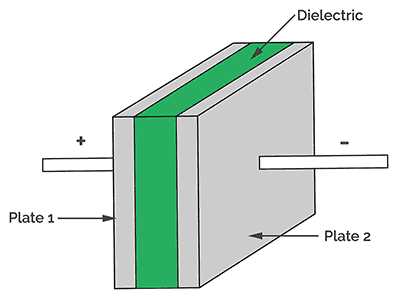
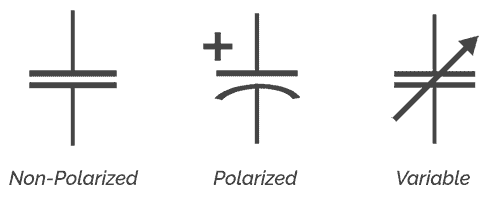
The dielectric material changes based on Temperature, DC voltage, AC voltage, Humidity, Frequency, Aging, and Piezo electric effect.
Different types of capacitors are categorized based on the construction and their properties. Basically they are two types. They are fixed and variable capacitors. Electrolytic capacitor have polarity and they have positive and negative symbol. Trimmer capacitors are used for tuning the capacitance in radio and audio circuits. Multi layer ceramic chip capacitors (MLCC) are used in electronic PCB (Printed Circuit Board) designs.
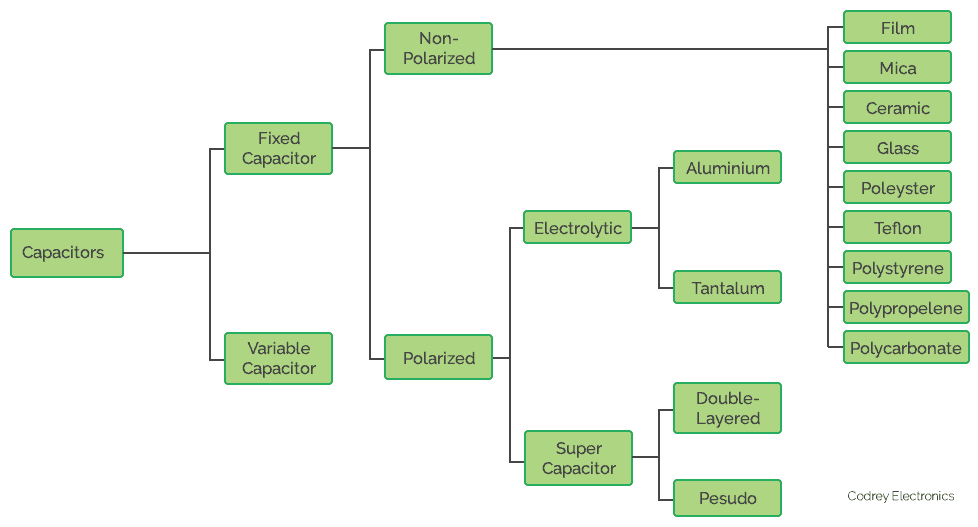
Advantages of Capacitor
Capacitors are used in wide variety of applications. Here are some of them.
-
Filter
The most common application for capacitor in electronic circuits is to suppress unwanted signals or harmonics. A Resistor and Capacitor combination such as RC filter is used to remove noise in analog signals. This is also used to protect AC voltage systems (Radios and cellular telephones). Switched mode Power supplies (SMPS)make use of capacitor to cutoff switching noise.
-
Decoupling Capacitor
The majority of the electronic circuits use decoupling capacitor to isolate sudden changes in power supply voltages. The capacitor is used in Integrated Circuit (IC) between supply voltage and the ground. This will maintain the stable voltage for the circuit.
3.Coupling Capacitor
It is used to divide different voltage levels from each other by blocking the DC potential. They are also used for amplifying in multi stage amplifiers to avoid overloading effect caused at first stage amplifier. This feature is implemented in electronic smart meters.
4.Oscillator Circuits
Micrcontroller and Microprocessors are often use load capacitors in crystal design for working of internal real time clocks. A proper combination of load capacitance has to be selected for working of microcontroller. The capacitor is responsible to generate precise sine wave form for synthesizers, RF tuning and timing circuits.
Summary
A capacitor has the ability to store electric energy in the form of electric field. It consists of two metal plates separated by a dielectric. When a voltage is applied, potential difference is created between the plates. Capacitance can be measured in farads (F), picoFarad (Pf), micro Farad (µF) and nano Farad (Nf). Higher the capacitance more charge can be stored. Capacitors will set time delay in different circuits such as rainguage counter, wind speed sensor (frequency counter).


